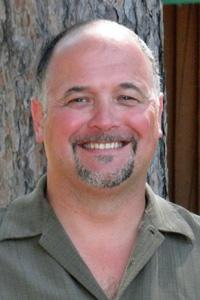
Education
- B.S., 1993, University of Wisconsin Stevens Point
- M.S., 1995, University of Wisconsin Madison
- Ph.D., 1999, University of Wisconsin Madison
Research
Aquatic Ecology, Fisheries, Hydroacoustics
My research program examines several aspects of fisheries ecology. Current projects are focused on studying the interactions between exotic and native fishes, the effects of climate change on habitat quality for cold water fishes, nutrient regeneration and ecology of vertically migrating fauna in Lake Superior, individual based modeling and stream ecology. While this group of topics is diverse, each is important for they are focused on examining the influence of human induced environmental change on aquatic communities. Fish populations are a vital source of revenue for economic interests in sport and commercial fisheries, as well as a vital link in ecosystem processes that influence water quality. Understanding linkages between aquatic species and ecosystems is vital to predicting the effects of changing the natural environment.
Recent Publications
-
Dobosenski, J. W.* Larson, J. Stasburg, T.R. Hrabik. 2020. Variable invasion dynamics of rainbow smelt create complex genetic structure across the Great Lakes Region. J. Great Lakes. Res. 46:382-390.
-
Keyler, T.D.*, B. Matthias, T.R. Hrabik. 2019. Siscowet lake charr (Salvelinus namaycush siscowet) visual foraging habitat in relation to daily and seasonal light cycles. Hydrobiologia 840:77-88.
-
Keyler, T.D.*, T.R. Hrabik, et al. 2019. Effect of Light Intensity and Substrate Type on Siscowet Lake Trout (Salvelinus namaycush siscowet) Predation on Deepwater Sculpin (Myoxocephalus thompsonii). Hydrobiologia 840: 63-76.
-
Sass, G.G., S.L. Shaw, T. P. Rooney, A. L. Rypel, J. K. Raabe, Q. Smith, T. R. Hrabik, and S. Toshner. 2019. Coarse woody habitat and inland lake fisheries: knowns, unknowns, and key uncertainties. Lake and Reservoir Management 35:382-395. https://doi.org/10.1080/10402381.2019.1630530
-
Olson, K.W.* T. Krabbenhoft, T.R. Hrabik, B. Mendsaikhan and O.P. Jensen. 2019. Pelagic-littoral trophic polymorphism in Hovsgol grayling Thymallus nigrescens from Lake Hovsgol, Mongolia. Ecol. Freshw. Fish. 28:411-423. DOI: 10.1111/eff.12464
Teaches
-
- BIOL 5833 Stream Ecology
- BIOL 3835 Freshwater Ecology
- BIOL 4761 Ichthyology
- BIOL 5805 Fisheries Ecology
- BIOL 2802 Ecology Lab
- IBS 8201 Ecological Processes
Current Graduate Student Projects
- Noland Michels, (M.S., Integrated Biosciences) (co-advisor w/Mensinger)
- Quinnlan Smith (M.S., Integrated Biosciences)
- Danny McCann (M.S., Integrated Biosciences)
Post-Doctoral
- Bryan Matthias, Postdoc Associate
Recently Completed Graduate Student Projects
- Bradley Dawson (M.S., Integrated Biosciences) (co-advisor w/Hoffman)-- Dietary Niche and Growth Rate of the Nonnative Tubenose Goby (Proterorhinus semilunaris) in the Lake Superior Basin
- Ryan Grow (M.S., Integrated Biosciences)-- Comparison of down-looking to multi-directional acoustic density estimates of pelagic fishes in Lake Superior
- Jamie Dobosenski (M.S., Integrated Biosciences). Thesis –Investigating invasive population genetics of rainbow smelt (Osmerus mordaz) in Laurentian Great Lakes region
- Trevor Keylor (Ph.D., Integrated Biosciences). Dissertation – Visual Sensitivity, Behavior, and Habitat of Select North American Fishes.
- Matt Pawlowski (M.S., Integrated Biosciences) (co-advisor w/Branstrator). Thesis – Contribution of invasive spiny water flea (Bythotrephes longimanus) to the Lake Superior food web.
- Ian Harding (M.S., Integrated Biosciences) (co-advisor w/Branstrator). Thesis – Long-term changes in growth and consumption by cisco (Coregonus artedi) in Lake Superior
Recent UROP Student Projects
- Nathan Kamm, Growth and foraging characteristics of age-0 walleye under varying light conditions.
Hobbies
Fishing, skiing, scuba diving, canoeing, and camping.